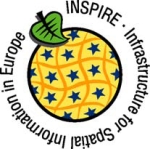Information System
The ISS information system allows data from the ISS to be described and shared among EVOLTREE partners.

The ISS Information System aims:
- to promote multidisciplinary research by sharing multiple information jointly related to the EVOLTREE ISS,
- to facilitate the access to datasets related to the Evoltree ISS,
- to preserve the knowledge of existing datasets, and
- to enhance understanding of the benefits of geographic information.
The ISS Information System is based on the GeoNetwork open source and allows easy sharing of geo-referenced thematic information between different organizations.
Description of the System
Geo-referenced datasets and maps, (from single tree locations to satellite images), are efficient communication tools for researchers, local managers and decision makers. The main goal of the EVOLTREE ISS Information System is to improve accessibility to a broad variety of data and related metadata (a data describing a data or a dataset) about ISS, obtained at different scales and from multidisciplinary sources, organized and documented in a standard and consistent way using ISO 19139 metadata and European INSPIRE directive.
The challenge is to enhance data sharing among the partners, to increase the collaborations and coordination efforts in collecting and exchanging information in the respect of intellectual property, to preserve data and spare resources. The information system is based on metadata description to discover, consult and access to the available data related to each ISS.
We decided to describe the available datasets (coming from heterogeneous supports: files, maps, databases ...) with the use of metadata that are centralised on a customized metadata management tool named Geonetwork. The information system was developed from June 2007 to August 2008. The tool is currently online and ISS correspondents started to describe their datasets in Summer 2008.
A multiple benefit is expected:
At the individual level, people generally know the data they own and currently work with. Unfortunately, through time, this knowledge is progressively lost. Either people just forget they have the information about a particular subject or they don’t remember where the data are located.
- For each actor, the use of metadata is a guarantee to preserve the major part of the knowledge on the existing data.
- At the ISS level, the data description will allow a rapid survey of available data and it will avoid repeating the same work twice.
- At the Network level, it will be very interesting for each partner to discover the data that are available for each ISS and relevant for a particular research.
- It will be a good source of information coming from people working on the same research sites, and it will improve the capacity to conduct cross studies across sites, across disciplines and across partners.
- We expect that the capacity to produce a data survey at the Network level will also stimulate the collaborations and facilitate decisions on joint acquisition of specific datasets like maps and others.
- Finally, the global goal is to enhance the data integration and exploitation and to preserve the knowledge about existing data.
For the metadata management we developed some web interface to make data sharing available through the metadata descriptions. Even if the data are not shared, people can contact the data owner to obtain more details further information or to ask for access to the data themselves (because metadata contain point of contacts). The sharing interface allows the transfer and the update of datasets from the ISS to the central server and makes the link between the datasets and the corresponding metadata.
Central Data Sharing Interface
The ISS information system is part of the global EVOLTREE information system. The central data sharing interface is available through this link. You can get more detail about the ISS information system in the complete help documentation (see Documents).



